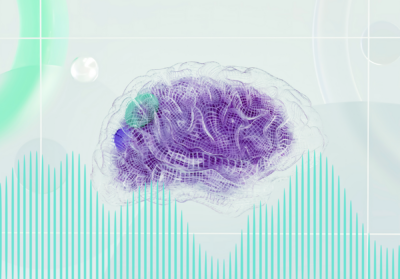How to improve the e-commerce shopping process?
e-Commerce shopping process in 2022 Given the ongoing economic context, the dynamics of shopping are constantly changing. In fact, nine out of ten Polish consumers admit that they have modified or plan to modify their usual shopping routine.[1] Some of the new shopping strategies identified include: At the same time, the nature of today’s changes […]

e-Commerce shopping process in 2022
Given the ongoing economic context, the dynamics of shopping are constantly changing. In fact, nine out of ten Polish consumers admit that they have modified or plan to modify their usual shopping routine.[1] Some of the new shopping strategies identified include:
- e-shopping – making purchases online out of a belief that better prices/deals are available online,
- hunting deals – shopping by hunting the bargains, e.g., on Black Friday,
- quality shopping – based on trust in recognized, high quality brands,
- low-risk shopping – making purchases with easy returns and deferred payments,
- belt-tightening – buying only absolutely necessary goods,
- ASAP shopping – seeking to make purchase prior to inflationary price increases.[2]
At the same time, the nature of today’s changes in shopping processes compels e-store owners to be more vigilant about the users’ behavior within the website. This includes analyzing potential customers’ navigating through the purchase path, using analytical tools such as HotJar, Clarity or CrazyEgg. With these tools, not only is it possible to verify the website’s pain points (i.e., components that potentially negatively affect the purchase path and “block” users from making a purchase), but also to determine at what stage of the purchasing process the user is. User behavioral analysis also entails store owners to revisit the purchase path within the website, thus enhance the chances of conversions made online.
The current economic situation also contributes to the extension of the purchase path due to in-depth offer research. Consequently, the product information, its quality, potential returns, and entire purchase process should be optimized for users’ needs and matched to the appropriate stage of the sales funnel.
Stages of the purchase path and its specifics
The purchase path falls into three stages:
- TOFU – building awareness
TOFU which stands for “Top Of the Funnel” is the starting point of a user’s purchase path. At this point a potential customer recognizes the need to purchase the product but is often missing specific details about the product or brand. TOFU focuses on building awareness, so the user should receive information about the product, for example from blog posts like topic teasers, performed tests and case studies showing the product’s advantages, but also all kinds of analysis. The aim of these materials is to provide a potential buyer with the information necessary for them to decide and complete a purchase.
- MOFU – deciding on opportunities
Having built awareness, the user moves to the decision-making stage, i.e., the middle of the sales funnel: MOFU. At this point, their expectations concerning the product are already more defined, but the brand remains an unknown. The potential customer is thus making comparisons between products available on the market that are relevant to their needs. MOFU is therefore a stage of in-depth research, where the user needs specific data on goods. Accordingly, relevant content of their interest includes comprehensive blog posts or tutorials and how-to videos or those with reviews, as well as ready-made merchandise comparison engines.
- BOFU – a decision
BOFU is the decision and action stage, which is the last moment to win the customer’s attention and convince them to make a purchase. At this point, social proof, meaning proof of social validity, will work well. This includes past customer reviews, merchandise ratings, and visual product comparisons which clearly indicate the advantages of the product on offer.

How to analyze the purchase path?
There are diverse ways to streamline the e-commerce shopping process, depending on the industry, the specifics of the e-store and its website, and specifically the target audience. Before starting to optimize the purchase path, however, it is necessary to identify potential improvement areas. To this end, it is worth using analytical tools such as Google Analytics, which provides access to the Bounce Rate data on rejection levels, as well as to Conversion Rates. These metrics can serve as a starting point for optimizing the website in terms of making purchases.
Tools like Clarity or HotJar can be used it the next steps. They allow for verification of the most frequently displayed sections of a page, as well as tracking the exact navigation moves of users (with the GDPR in mind) during a given session, thus giving a chance to indicate improvement areas. In addition, it is also worth considering A/B testing of specific solutions on given sub-pages, such as changing a button color or the placement of specific elements, to decide on the optimal solution.
Mechanisms for influencing the purchase paths
Matching content to the intents of search phrases in each stage of the purchase path and trends
Equally important, however, is the keywords’ intent in the context of the purchase path stages. It is particularly significant about the earlier-discussed diversified purchasing strategies of consumers, which imply a variety of the purchase moments for the goods in question, which are non-uniquely correlated with the trend. This includes changing the user concept depending on the shopping stage they are in.
For example:
A user plans to buy autumn/winter boots but does not yet have specific expectations. So, they type the phrase “$gender boots” into the search engine. Following the initial research, they decide to buy insulated boots. Thus, the next time they approach their purchase, they type “$gender insulated boots” into the search engine and expect to get specific results relating strictly to the keyword they used.
Based on this example, matching keyword search intents in the context of different sales funnel stages is crucial not only because of the peak of key phrase searches. – For the sake of the above example, let’s assume that the highest volume of searches for the phrase “boots” takes place in September. – Online stores also need to keep in mind the moments before and after the maximum surge of interest in a product, so as to address the expectations of a wider audience who could potentially change their buying strategy and make a purchase under “hunting deals” or “belt-tightening,” categories i.e., when the goods are no longer in the sales peak, but the buyer necessarily needs them at a given time.
It is also worth mentioning Google’s increasing focus on phrase intent and the “relevance” of the website content to the user, including the recent Helpful Content Update algorithms (initially only available in English-speaking markets). This consists in creating sub-pages focused on a given phrase intent, for example, for the phrase “women’s black boots,” there should be a separate sub-page linked from “women’s boots” page. With such a process, Google’s bots can more easily match our dedicated sub-page to a specific phrase, thus increasing our chances of getting to top rankings in search results.
Making the website display more attractive in organic results
Regarding the above example, e-stores should also pay attention to displaying their sub-pages in organic results.
When typing in a search phrase of interest to make a purchase, the user expects to get maximum specific results with product details and preview visualization, e.g., as images under the search result (screen below).


The visualization above is based not only on the work done by website owners to make the results more attractive, but also on the site’s evaluation by Google bots. When a website has a clear navigation structure with categories and subcategories as well as optimized graphics, the chances of displaying it in organic results as in the above examples goes up. This increases the odds of catching the user’s attention, which in turn leads to them going to the website and potentially making a purchase.
Looking after the product creation – social proof
Once the user’s interest is gained and they go to our website, it is necessary to maintain their interest. The worst possible scenario is for the user to get lost on the site, get annoyed and abandon it. This can be caused by unintuitive website menus, long page loading times, errors on the website, inadequate product range or lack of product information, which the user looks for, for example its size.
So, in terms of appropriate product creation, it is worth considering communicating both the product details, as well as the materials used or size.
Example: auroria.pl


The merchandise presentation also includes a suitable visual format of the product like photos. The product images should show the product from all sides, preferably also on a model, to make it easier for the user to visualize the product with specific styling. On top of that, it is worth mentioning that at the recent Search On conference Google hinted at a planned implementation of 360 graphics in organic results. Having on-page photos from every angle will certainly be an add-on value in the near future.[3]
Example: deezee.pl

Another component of product creation involves cross-selling, which affects the average shopping cart value and direct navigation of the consumer within the website. At the same time this serves as an example of reaching out to users by pointing out complementary products in cross-selling, thus making shopping easier.
Example: wojas.pl

Social proof also falls within the scope of product creation, which positively influences the user’s purchase path. This means guiding the user to the opinions of other buyers about the product, to reassure them that their interest in the product is justified, as there are a number of people satisfied with their purchase.
Example: wojas.pl

User experience along the purchase path
The purchase path includes not only the product creation methods and mechanisms demonstrating the qualities of a given merchandise. It also serves as an adequate and clear message to the user about the products’ delivery, the possibility to make a return and the difficulty level of this process, as well as the available payment methods.
Naturally, in order to meet the users’ expectations, access to the said information should be as easy as possible, while the information needs to be comprehensive and answer questions which the user has not yet asked. Plus, to enhance the user’s experience along the purchase path and facilitate the buying process, payment and delivery options should be broad, so that the buyer has a choice of the most convenient one.
Example: deezee.pl

The same applies to making returns. Since online shopping is subject to uncertainty as to whether a product will turn out to be the right size, material, and comfortable to wear, a way to reassure users is to allow free returns, for example.
Example: wearmedicine.com

At the end of the day, the right level of purchase path optimization holds the key to a satisfactory sales process (right next to attractive product range and pricing, of course). There is no perfect mechanism, however, which will do its job for every target group, every industry, and every website, and in addition will operate with the same efficiency in the long term. By the same token, bear in mind that optimizing a website for both SEO and users’ purchase path is an ongoing process which will evolve with the needs and buying habits of visitors. Thus, the key to success lies in continuous analysis of competitors’ activities and users’ behavior within the website.
[1] “W Kryzysie Do Ecommerce Raport 2022” – https://eizba.pl/app/uploads/2022/08/W_Kryzysie_Do_Ecommerce_Raport_2022.pdf
[2] ibidem
[3] https://searchon.withgoogle.com/


